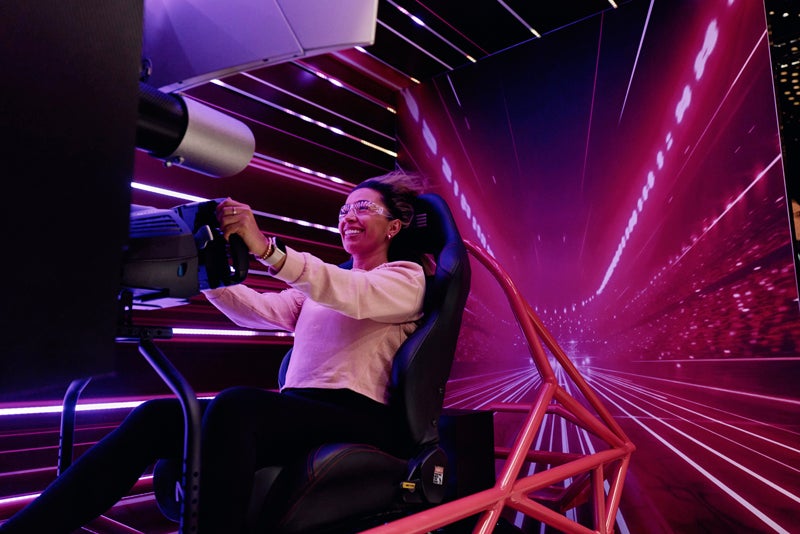Pam Perino, digital content operations and development manager at Ghirardelli Chocolate Company, shares how using an artificial intelligence software to help select, order and modify images increases the global chocolate brand’s conversion rate.
Pam Perino has an endless number of product detail pages to manage, said the digital content operations and development manager at Ghirardelli Chocolate Company.
Shoppers can buy Ghirardelli’s products on its own branded website, at grocery stores, drug stores, mass merchants, clubs and digital-only players. With all of these outlets, Perino has enlisted artificial intelligence analytics vendor Vizit to manage and improve its product detail page content including images.
Ghirardelli increases conversion from image reordering
One recent success was a 10% conversion rate increase on average for its Amazon product detail pages when it reordered the images in the carousel, Perino said.

Here’s what happened: Ghirardelli is working to “templatize” its product detail pages across all its channels to have brand consistency. The brand typically shows shoppers six to seven images per product, which includes: the main product hero image, taste images, occasion images, range images, the ingredients and the nutritional content.
Taste images show the chocolate product at its best in what it’s used for. For example, if the product is baking chocolate chips, the first image after the hero image would be of a chocolate chip cookie with gooey, chocolate melting, Perino said. Occasion photos show consumers using the product naturally, such as using a chocolate square on a s’more or giving a gift basket as a present. Range photos show the product with other products in its product family.
After using Vizit’s tool integrated with Ghirardelli’s Salsify software, the brand learned it would convert more shoppers if it moved up the range images further in the carousel, Perino said.
“The range shot traditionally we would put at the end of the carousel, before the ingredients image and the nutritional image, but in some cases, it’s gotten bumped up,” Perino said. “So it’s really interesting to see the reordering that happens. And it varies by product.”
Once the app tells Ghirardelli the desired image order, the brand can reorder the images and send it to the merchant to make the change. Currently this Vizit feature is only available with Amazon, but it plans to roll it out with other brands soon, said Eli Orkin, chief marketing officer at Vizit.
Having a hero image that draws in the shopper and then a pleasing image order is important because once a shopper starts clicking through the image carousel, there is a high likelihood she will click through the entire thing, Perino said.
How the AI analyzes images
Ghirardelli has used Vizit for the past year and half. The AI-based technology provides a 0-100 score on how effective an image will be at converting a target customer; the higher the number, the more likely the shopper will convert.
The technology draws on the billions of publicly available images and analyzes 20,000 attributes about an image, including elements such as scenery, models, colors, product angles, shadows and more. It also uses publicly available metrics, such as social media engagement, traffic and its own client data to provide scores.
Perino shoots for Ghirardelli’s images to be at least at a 60 and possibly a 70 and above.
“We get a great, clear understanding very quickly and efficiently about opportunities to optimize,” Perino said about the image scoring. “Perhaps to either update a current image that we might have, or maybe look for something new or different, that might resonate better. And help us to improve our scores and improve conversion and purchases with the consumer in the long run.”


For example, one of Ghirardelli’s product images of semi-sweet chocolate chips had a score of 22.2. Ghirardelli increased that same image’s score to a 97.2 by removing the image of the cookie on the product packaging and instead having that image on top of the package, for more of a three-dimensional look. The chocolate chips also were added to the foreground instead of on the package. The brand also emphasized the bag’s size on the package.
After making modifications based on Vizit’s software, retailers on average have a 10%-30% increase in conversion rate, Orkin said. This depends on product category and where the merchant started from. Perino said this average conversion rate sounds right, although she doesn’t have the brand’s new analysis software in place yet to put a tangible number to it.
“We’re still using some traditional methods, but this is helping determine things quicker and faster,” Perino said.
AI saves Ghirardelli 10x the time
The biggest change since using the software is the time savings, Perino said. She estimates that using AI to select and edit images is 10 times faster than the previous, manual process.
“The biggest change is getting quick reads on how our current content is performing from our hero images on the search pages and the PDPs, as well as everything past the hero image,” Perino said.
The brand also is using the tool in real time when designing creative. For example, an art director and designer can work on a campaign with six or seven ideas, put them into the Vizit platform and receive feedback on which of their ideas would be the most effective or need tweaking.
For example, on a recent “taste image” for chocolate chips in brownies, the Vizit platform scored an image that tightly crops the background brownies out of the picture much higher than the image that displays more background brownies. With just a few tweaks of the image, Vizit scored the winning image at a 74.8 compared with 39.0.


Beyond product detail pages, Ghirardelli also is using Vizit to guide its image decisions for testing images on ads and for packages for physical products.
The future of AI at Ghirardelli
In the future, Ghirardelli may use generative AI to create images, Perino said. For example, the chocolate brand likes to have seasonally relevant product images, such as a Christmas or Halloween scene. Generative AI could help create those backgrounds. Or, if a product is exclusive to one retailer, Ghirardelli still has to provide a full carousel of images. Generative AI could help instead of having a full photo shoot for one product.



